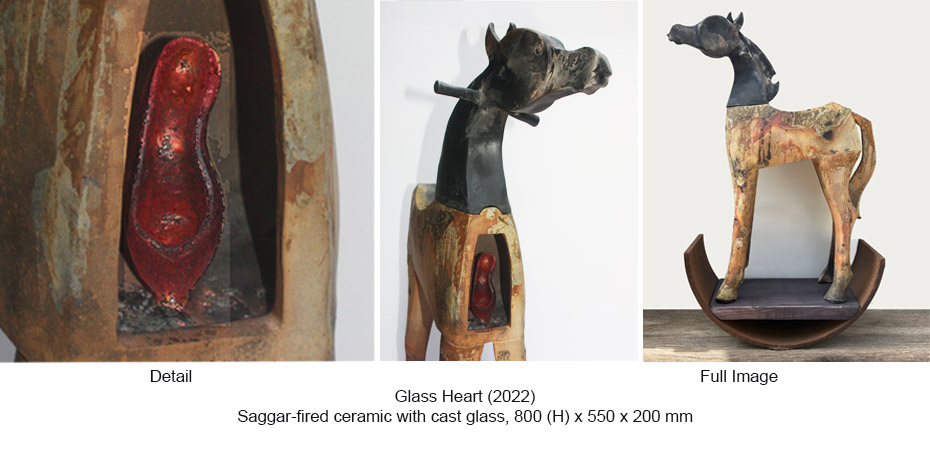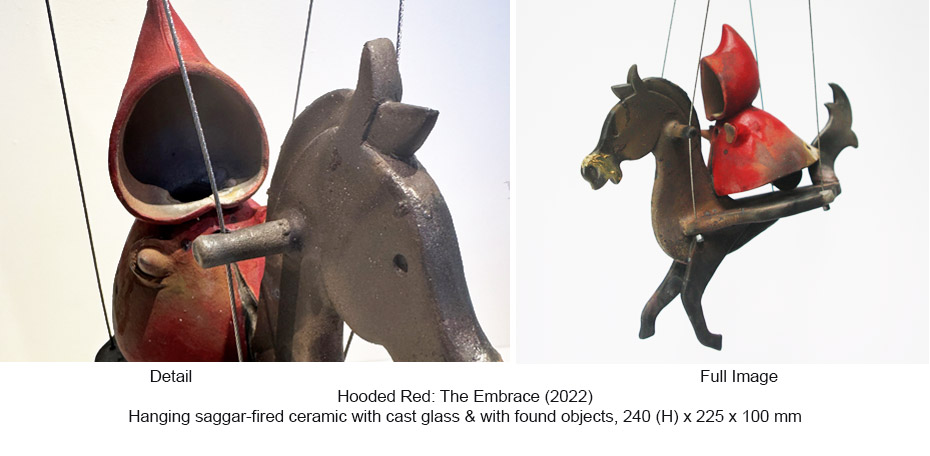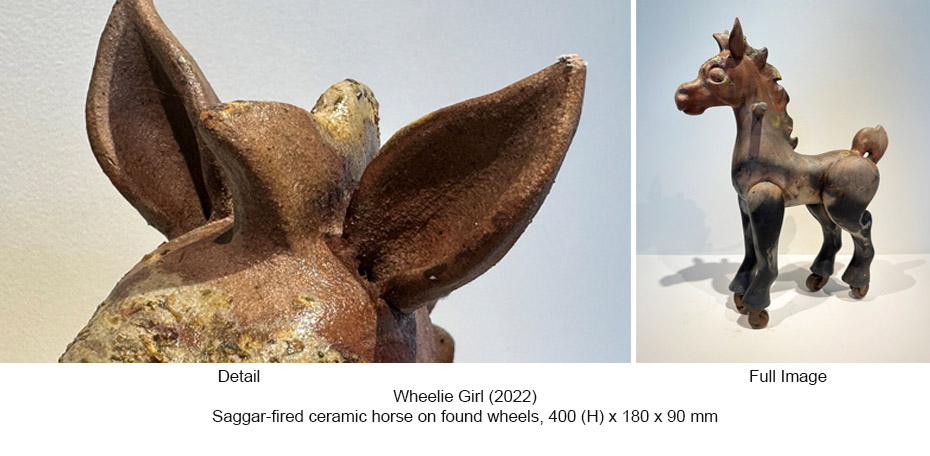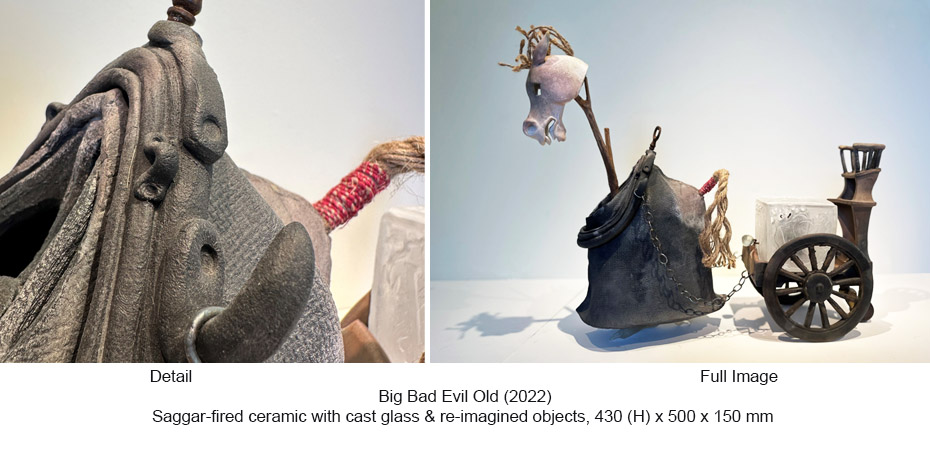Born in Te Aroha in 1967, Bronwyn Gayle earned a Diploma of Craft Design from Christchurch Polytechnic in 1994. Moving to Dunedin in 1995, she studied at the Otago Polytechnic School of Art earning a Diploma of Ceramic Design (1995), a Post Graduate Diploma of Visual Arts (2019) and a Master of Fine Arts, with distinction (2022).
“While searching through old photos I came across two images of myself as an infant with a rocking horse. In one I wore a red hooded dress and red shoes. The characters Little Red and her Equine Companion are the origin and inspiration for the works in this exhibition. The two characters are re-imagined – evolving, maturing, contemplating difficult questions and growing old together. The toy-like sculptures have become the conduit for exploring vulnerable inner selves and challenging ideas about relationships with the familiar.”
The ceramic, toy-inspired objects also have precedence in the ancient clay toys excavated throughout the world. When comparing ancient toys with their modern counterparts, the commonality of form and function provides a touching awareness of a shared human experience, still palpable despite the different ages from which they come. This human intimacy with toys and play is a mutual familiarity outside time and place. Toys create a fissure in our mundane world and invite daydream and speculation. They are by nature both ancient and modern, partly tangible and partly from the realm of the “other”.
The saggar-firing process used to create the ceramic portions of the works is an amalgam of historical and contemporary experimental techniques. Each clay piece is individually wrapped in combustibles and then coated in clay slip and paper to form a saggar container. After drying, these are fired in a gas kiln before the saggars are broken open to reveal the pieces inside. The finished works are no longer pristine, but marked and coloured by smoke and fire, bearing the scars of their making.
“I created these toy-inspired pieces with consideration of the notion of ‘Sympathetic Magic’. The horse hair, dung and hay that are burnt in these saggars, are an alchemical attempt to bind qualities of the living equine within the equine sculptures the saggar boxes contain.”
The saggar-fired ceramic pieces are paired with re-imagined found items and cast glass. By casting glass, we capture it in its molten form. It is akin to setting glass traps and waiting, sometimes for weeks, to find out what you have captured. The pairing of ceramic and cast glass toys presents a perilous juxtaposition – an enticing invitation to play with danger, where the fragility of the glass exposes the fragility of life.



















